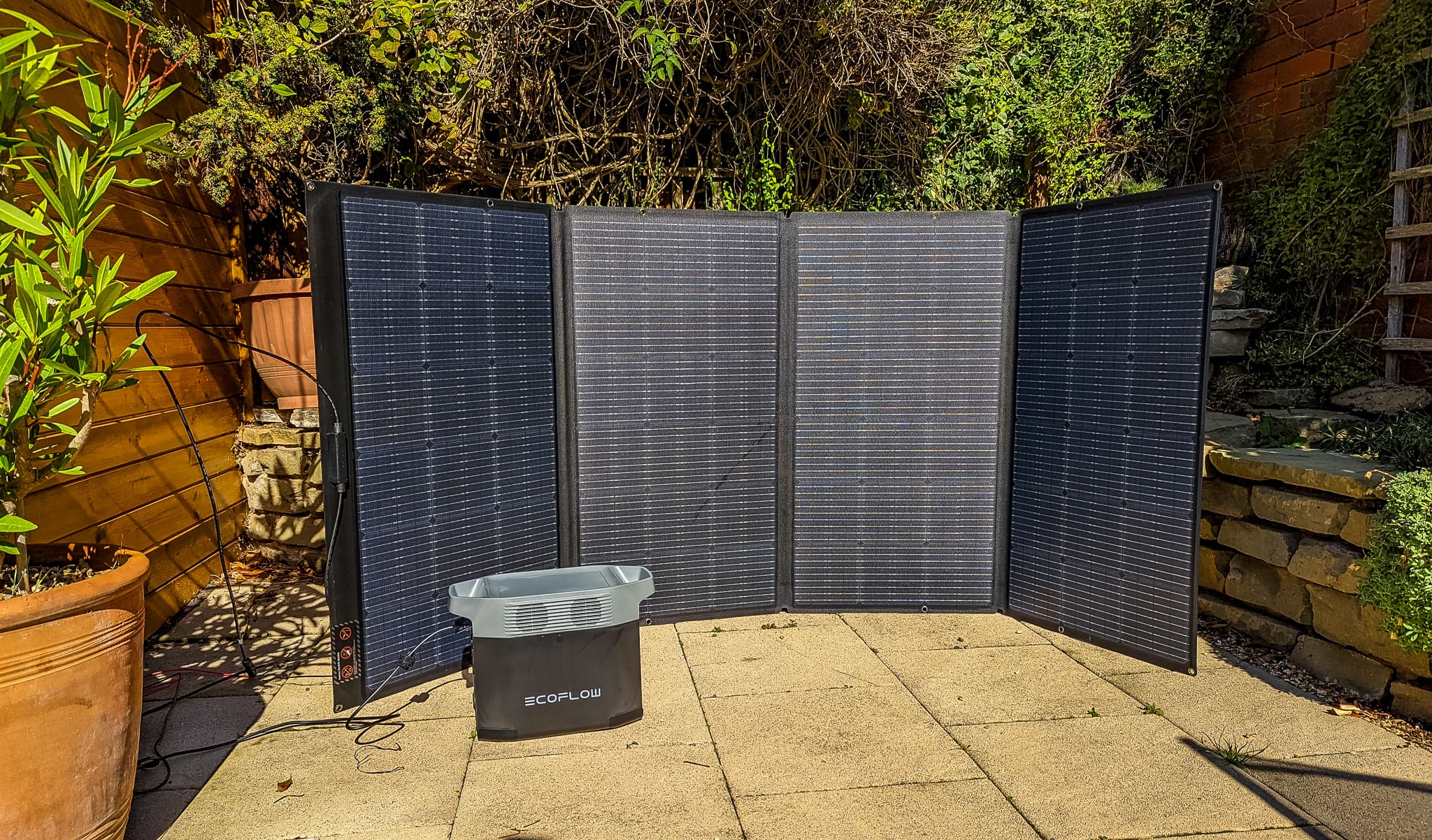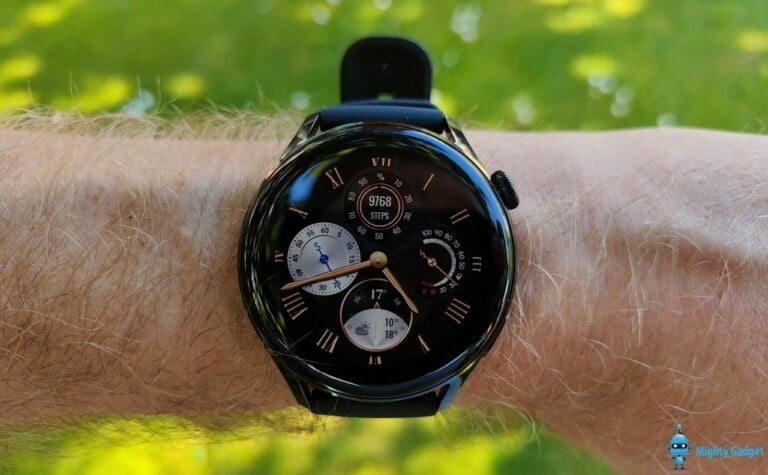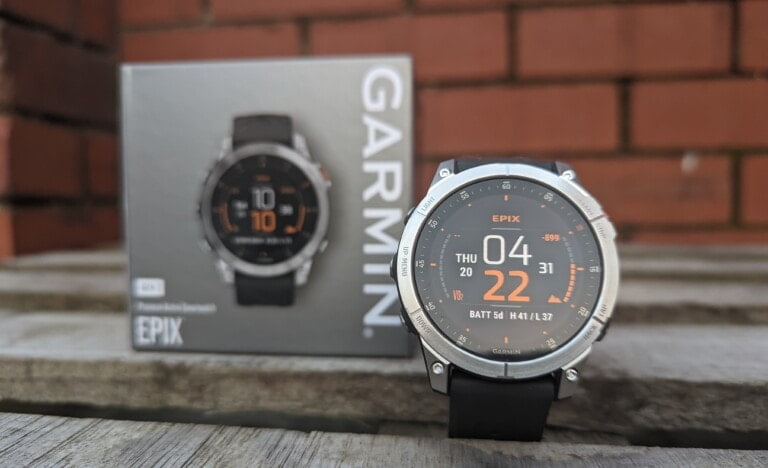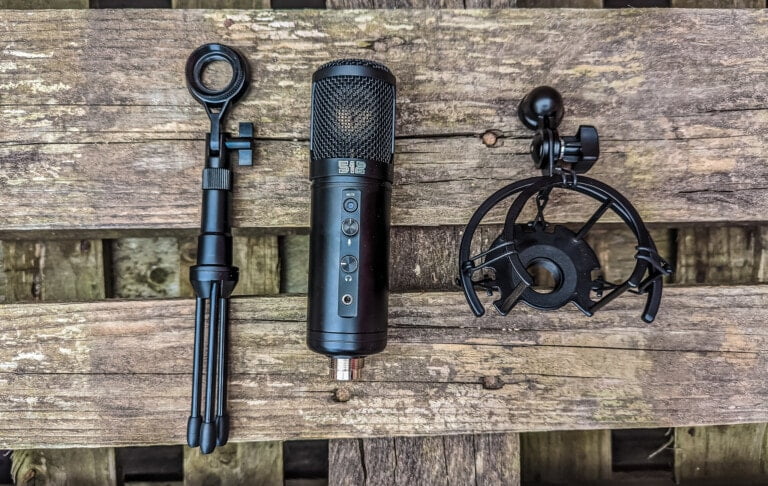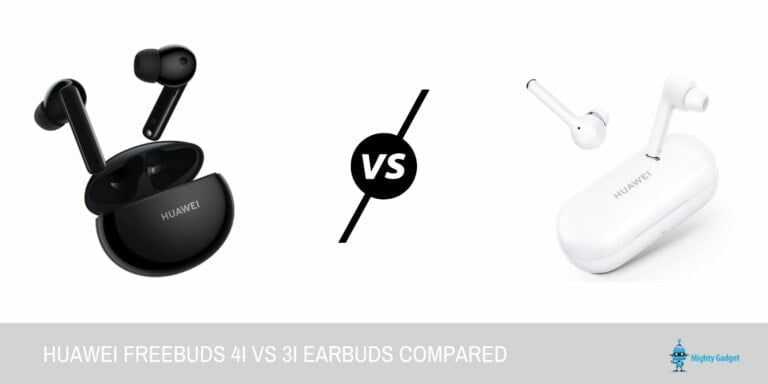Any links to online stores should be assumed to be affiliates. The company or PR agency provides all or most review samples. They have no control over my content, and I provide my honest opinion.
A few weeks ago, I reviewed the amazing EcoFlow DELTA 2 portable power station. It is probably the best option on the market if you want something in the 1 kWh range. The new LiFePO4 battery is perfect for people that use a power station extensively, it should last several years without battery capacity degrading much.
It also supports up to 500W solar charging, and in theory, for some small off-grid living scenarios, it could be a self-sufficient form of power (during the summer or sunnier regions than the UK).
EcoFlow conveniently does a 400W solar panel, it is their top-of-the-range model, and as far as I can tell, it is the largest portable solar panel on the market. At £999, it is certainly not cheap, but if you spend a lot of time away off grid then this will not only save you money but also allow you to remain off grid as much as possible without having to plan your life around charging your power station.
Buy from EcoFlow
| Preview | Product | Rating | Price | |
|---|---|---|---|---|

| EF ECOFLOW 400W Portable Solar Panel, Foldable & Durable,... | Buy on Amazon |
Specification
- Rated Power: 400W
- Cell Type: Monocrystalline silicon
- Efficiency: 22.60%
- Dimensions: 105.8 x 236.5 x 2.5cm (41.7 x 93.1 x 0.98 in)
- Open Circuit Voltage 48V (Vmp 41V)
- Short Circuit Current: 11A (Imp 9.8A)
- Weight (Solar Panel): Approx. 16.0Kg (35.3lbs)
- Weight (with Kickstand Case): Approx. 19kg (41.9 lbs)
Design and Set Up
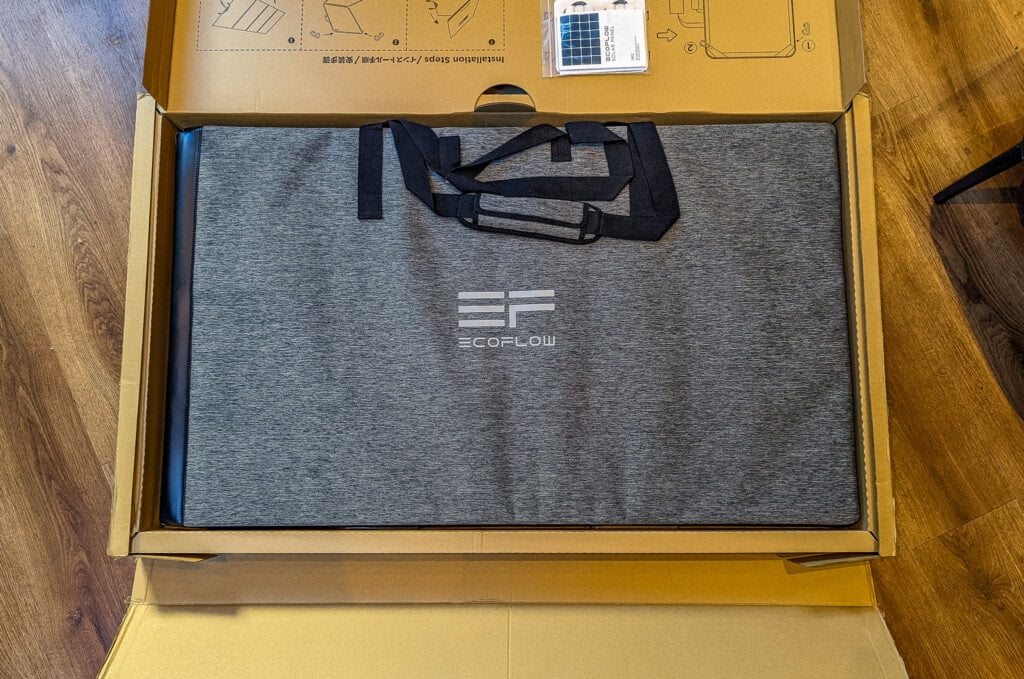
So far, I have only reviewed 100W portable solar panels, which are nice and small. They are easy to carry around and easy to set up.
I obviously knew this would be a lot bigger and heavier, but I hadn’t really put much thought into how big this was. It is very big. In terms of weight, it is literally just 4 times the weight of a 100W solar panel, the Jackery SolarSaga 100W is 4.69kg, and this is 19kg, which is 7kg heavier than the EcoFlow DELTA 2.
The solar panel consists of four main panels, so it folds down into a quarter of the total size, and it is all contained in a convenient bag with carrying handles. The panel is very thin, so the overall thickness is remains thin, even when folded up. But it is still quite big.
Due to the overall size and weight, setting it up feels a little cumbersome, certainly the first time I did it. When unpacked, the panel doesn’t have any carry handles, and it is just a bit fiddly setting it up.
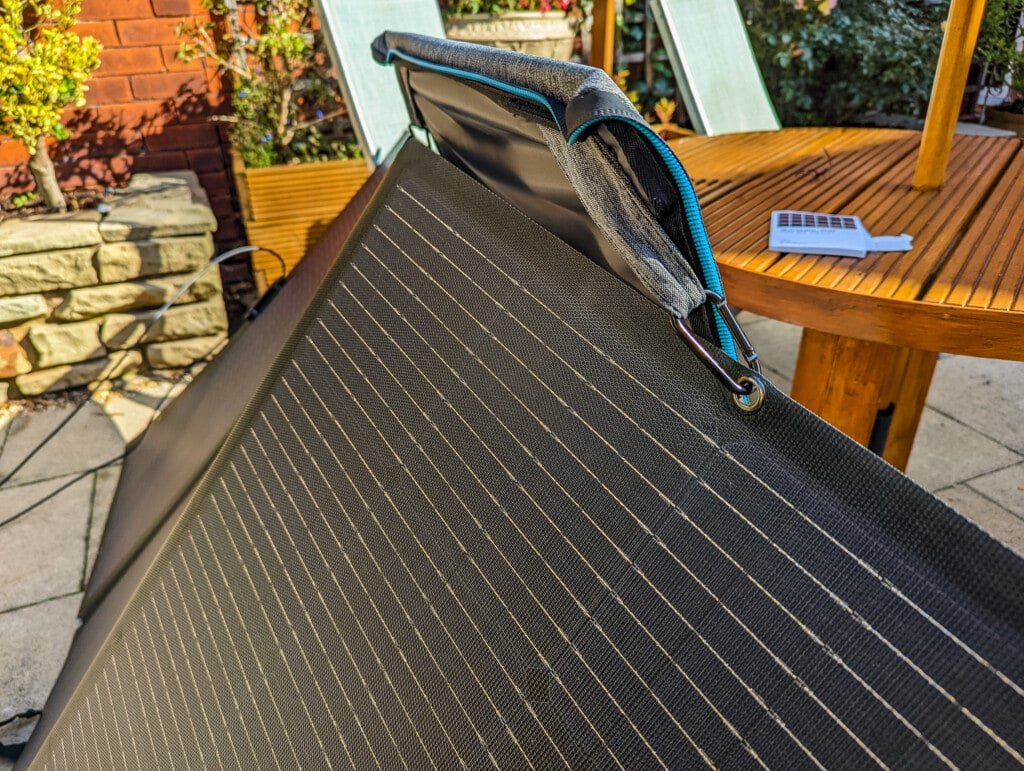
The bag acts as a prop for the panel, allowing you to angle it upwards for optimal light exposure. To do this, you need to use the small carabiners that are included in the package and then the rigid side of the bag props it up while the thin side of the bag stops the panel from sliding away and falling flat.
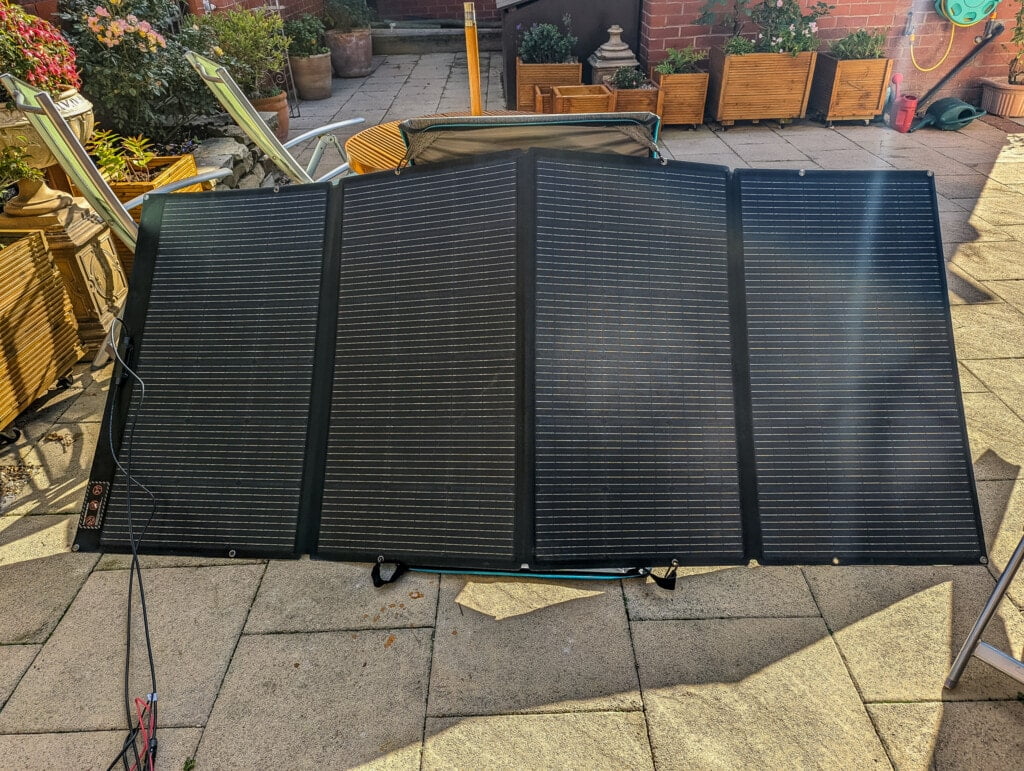
It is a lot more work than setting up the SolarSaga 100W, but I can’t think of any other superior way they could have done this while keeping the overall footprint of the bagged-up panel as small as possible.
MC4 Connection
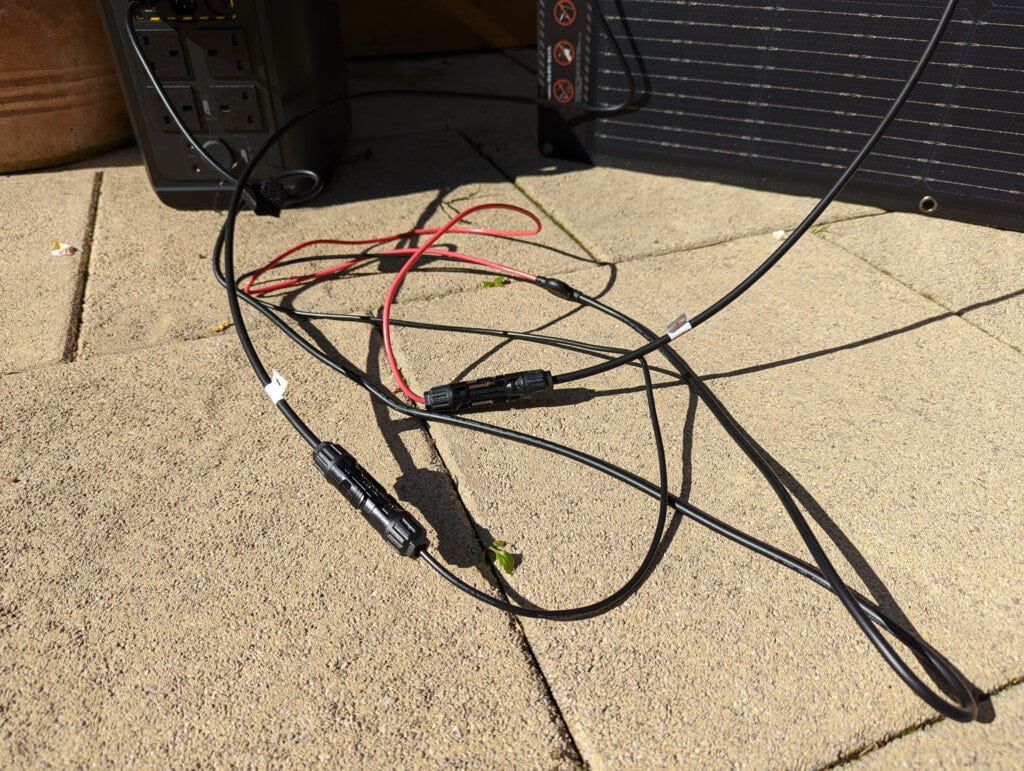
As I am relatively new to power stations and solar panels, there was a small learning curve with connectivity. The Jackery has two options for solar input, the normal DC wall outlet port or the Anderson port, which allows two panels to be paired up with the Y-splitter.
EcoFlow uses MC4 and connects to the DELTA 2 with an XT60 connector. The XT60 looked similar to the Anderson, but it is not the same.
This requires you to connect the positive and negative ends to the corresponding connectors on the solar charging end (I stupidly didn’t connect both at first, thinking they were just different things). They are male/female plugs, so it should have been idiot-proof,
This design allows you to run multiple solar panels at once and have them connected up in series or parallel.
Running multiple solar panels – Parallel vs Series
I haven’t tested running multiple solar panels as my DELTA 2 can only handle 500W, and you should ideally match up the solar panels.
However, if you have a DELTA MAX, you can run two panels, or the DELTA Pro can go up to 1600W with four of these panels.
EcoFlow has a useful video on how to connect the panels up in either parallel or series.
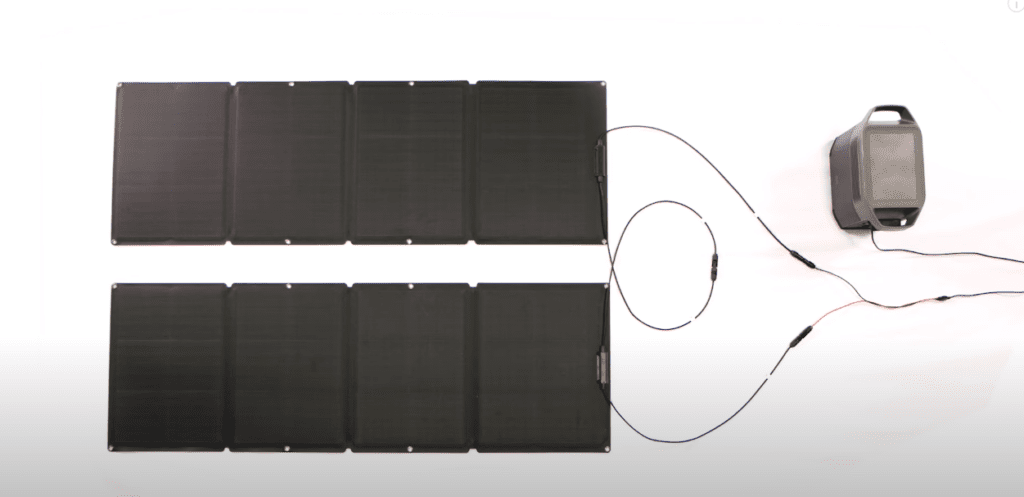
The way you connect them is important. EcoFlow recommends not to use parallel because this doubles the current with two panels, and the solar input is limited to between 10A and 15A depending on the model you use (15A with the DELTA 2). The 400W panel provides 11A; running two in parallel will work, but the power station won’t charge as fast. This is also why you should match up solar panels, as you need the current to be the same, and it will often vary between models.
In series, it is the voltage that increases. The 400W panel provides 48V, and the DELTA Pro can handle 150V, or the Max can handle 100V. The DELTA 2 can only do 60V, but it would be excessive to run two 400W panels with this (you could run multiple 220W Bifacial panels with 21.8V each).
Solar Panel Performance
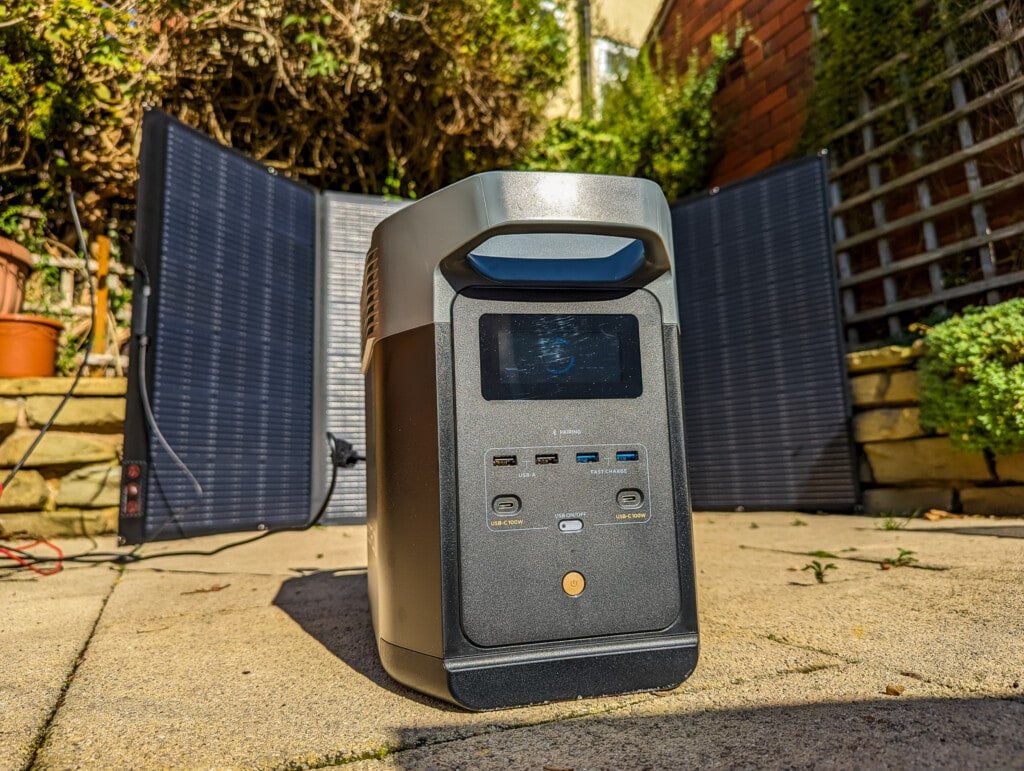
I received the panel towards the end of September, and I live up north in the UK. As you can expect, the weather can be unpredictable and often cloudy, or more likely rainy.
I got lucky for a couple of days with clear skies, and thanks to the massive 400W capacity, it doesn’t take all that long to charge up the DELTA 2.
On my first main test, where I monitored how quickly it charged. I set it up in the back garden at around 1 pm. The DELTA 2 was at 65% charge when I began the solar charging. The location wasn’t ideal as there are buildings around us, but I managed to get decent coverage for the majority of the time it was in use. With a bit of tweaking, I was able to hit around 305W as I was observing it.



For the majority of the time, it seemed to settle between 150-250W.
- At 13:05, towards the start of the charge, with the battery at 67% and the input at 289W, the app indicated it would take 1h 26 mins for a full charge.
- At 13:39, the app reported 124W input, and the battery was at 79% with a predicted charge time of 1h 45m.
- At 13:51, it was 255W at 83% with a 54 mins charge remaining (I assume we had a bit of a cloudy spell).
- Then at 14:28, it was 149W, 95% and 28 mins remaining.
- At 14:49, it was reporting 175W and 99% while saying it would be 14m to charge. It seems to stall at 99%.
Considering the sub-optimal conditions, I am quite impressed with that. The Jackery SolarSaga 100W would hit about 80W in absolutely perfect conditions, whereas the cheap clones I bought would hit around 60W.
EcoFlow states the efficiency of this panel is 22.60% which is presumably the same as the up to 23% that Jackery quotes.
One of the great things about the Ecoflow DELTA 2, is that it can charge faster from solar than the Jackery Explorer 1000 would charge from mains.
Luckily the weather hasn’t been too bad throughout my time testing this panel. We have had enough sun to allow me to keep the DELTA 2 charged whilst using it on my mother’s canal boat for a day. I mainly used it to keep my beer cold in the Alpicool K25, but also to charge my laptop and phone.
I also hooked up all the electronics in my garage/garage and tried to run it off-grid. There is only a fridge, freezer, POE switch, access point and CCTV camera connected in there, so it is not very demanding, but I was successfully able to do it for 24 hours. I didn’t fancy doing it for much longer than this due to the cost of the panel and the chance of theft.
Compatible Portable Power Stations
You should be able to use this on any of the EcoFlow power stations. However, not all can support 400W, and some can support enough to handle multiple 400W panels:
- DELTA 2: 500W
- DELTA: 400W
- DELTA Pro: 1600W
- DELTA Max 2000 and 1600: 800W
DELTA Mini: 300W - River: 200W
- River Max: 200W
- River Pro: 200W
Price and Alternative Options
| Preview | Product | Rating | Price | |
|---|---|---|---|---|

| EF ECOFLOW 400W Portable Solar Panel, Foldable & Durable,... | Buy on Amazon |
There is no getting away from the fact that the EcoFlow 400W solar panel is very expensive. It is their largest panel and will set UK buyers back £999 and US buyers $1199.
Buy from EcoFlow
The 220W Bifacial model is £549 with solar on both sides of the panel for a boost in ambient light. Then the 160W panel is £379, and the 110W is £319.
In the UK, Jackery only has the 100W solar panel, and this is £272.99. None of the Jackery power stations can support 400W solar. In the US, they have the $699 SolarSaga 200W and the Explorer 2000 Pro can handle 6x200W panels, and the Explorer 1000 Pro can handle 4x200W panels.
Bluetti has the PV350 350W Solar Panel, which is about £900. Or the PV200W (200W) panel for £499
ALLPOWERS has a 200W panel for £300, which is about the most cost-efficient model I can find.
Overall
This is a serious portable solar panel that costs a lot of money. If you are off the grid a lot and use a compatible EcoFlow DELTA a lot, then it is a fantastic investment. I would imagine this could keep someone living in a van, canal boat or other off-grid scenarios self-sufficient quite easily during the summer months (when used with a decent capacity power station).
As expensive as it is, it looks like most solar panels cost roughly the same when looking at watts per pound. Therefore this is going to be the best option if you want a higher-powered solar panel.
EcoFlow 400W Solar Panel Review Rating
Overall
90%-
Overall - 90%90%
I am James, a UK-based tech enthusiast and the Editor and Owner of Mighty Gadget, which I’ve proudly run since 2007. Passionate about all things technology, my expertise spans from computers and networking to mobile, wearables, and smart home devices.
As a fitness fanatic who loves running and cycling, I also have a keen interest in fitness-related technology, and I take every opportunity to cover this niche on my blog. My diverse interests allow me to bring a unique perspective to tech blogging, merging lifestyle, fitness, and the latest tech trends.
In my academic pursuits, I earned a BSc in Information Systems Design from UCLAN, before advancing my learning with a Master’s Degree in Computing. This advanced study also included Cisco CCNA accreditation, further demonstrating my commitment to understanding and staying ahead of the technology curve.
I’m proud to share that Vuelio has consistently ranked Mighty Gadget as one of the top technology blogs in the UK. With my dedication to technology and drive to share my insights, I aim to continue providing my readers with engaging and informative content.
Last update on 2025-07-09 / Affiliate links / Images from Amazon Product Advertising API

